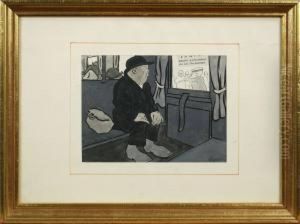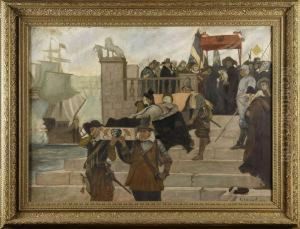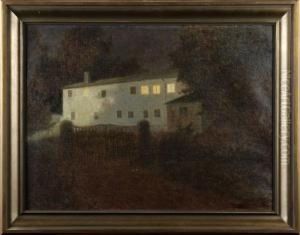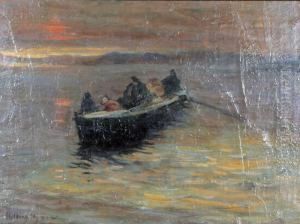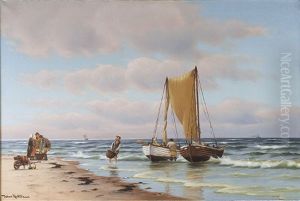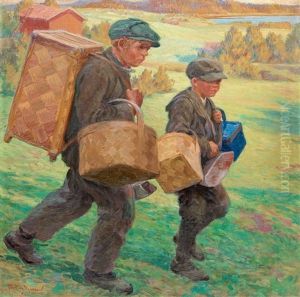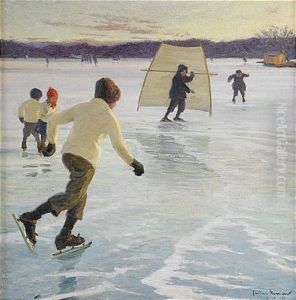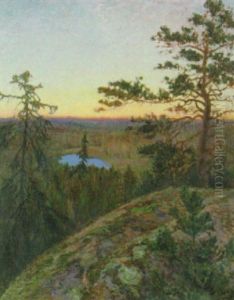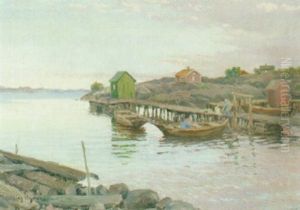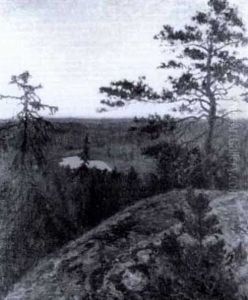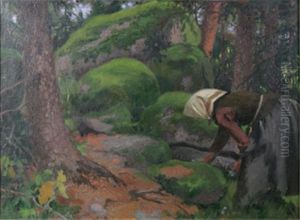Hilding Nyman Paintings
Hilding Nyman was a Finnish artist, born in 1904 and passing away in 1984. His career spanned a period of significant change in the Finnish art scene, moving through various styles and influences, yet he managed to carve out a distinct identity for himself. Not widely known outside of Finland, Nyman's work nevertheless contributes an important chapter to the narrative of 20th-century Finnish art, reflecting the nation's cultural shifts and its evolving aesthetic sensibilities.
Nyman's artistic journey began in the 1920s, a time when Finland was establishing its identity following independence from Russia in 1917. This era saw a flourishing of Finnish arts and culture, with artists seeking to express their national identity through their work. Nyman, however, was not bound by strict nationalism in his art; instead, he absorbed and integrated broader European influences, ranging from Impressionism to more modern movements. His early work shows a keen interest in landscape and nature, a theme that would remain prevalent throughout his career.
In the 1930s and 40s, Nyman's style evolved as he experimented with more abstract forms, reflecting the broader trend in European art towards abstraction. Despite this, he never fully abandoned the representational basis of his work, often merging abstract and figurative elements in a way that was both innovative and distinctly his own. This period of his career is marked by a vibrant use of color and dynamic compositions that suggest movement and transformation.
After World War II, Finland, like much of Europe, went through a period of reconstruction and reflection, and Nyman's art from this period reflects a contemplative, sometimes melancholic tone. He became more involved in public art projects, contributing murals and other works to public buildings, which allowed his art to reach a wider audience. Throughout the 1950s and 60s, his work continued to evolve, though he remained largely true to the themes and styles that had defined his earlier work.
Nyman's contributions were recognized in Finland, though he remained relatively obscure internationally. His works can be found in Finnish museums and private collections, where they stand as testament to his skill, creativity, and unique perspective. Hilding Nyman died in 1984, leaving behind a body of work that, while perhaps not widely known, is deeply appreciated by those who encounter it, offering insights into the Finnish soul and the broader currents of 20th-century art.
